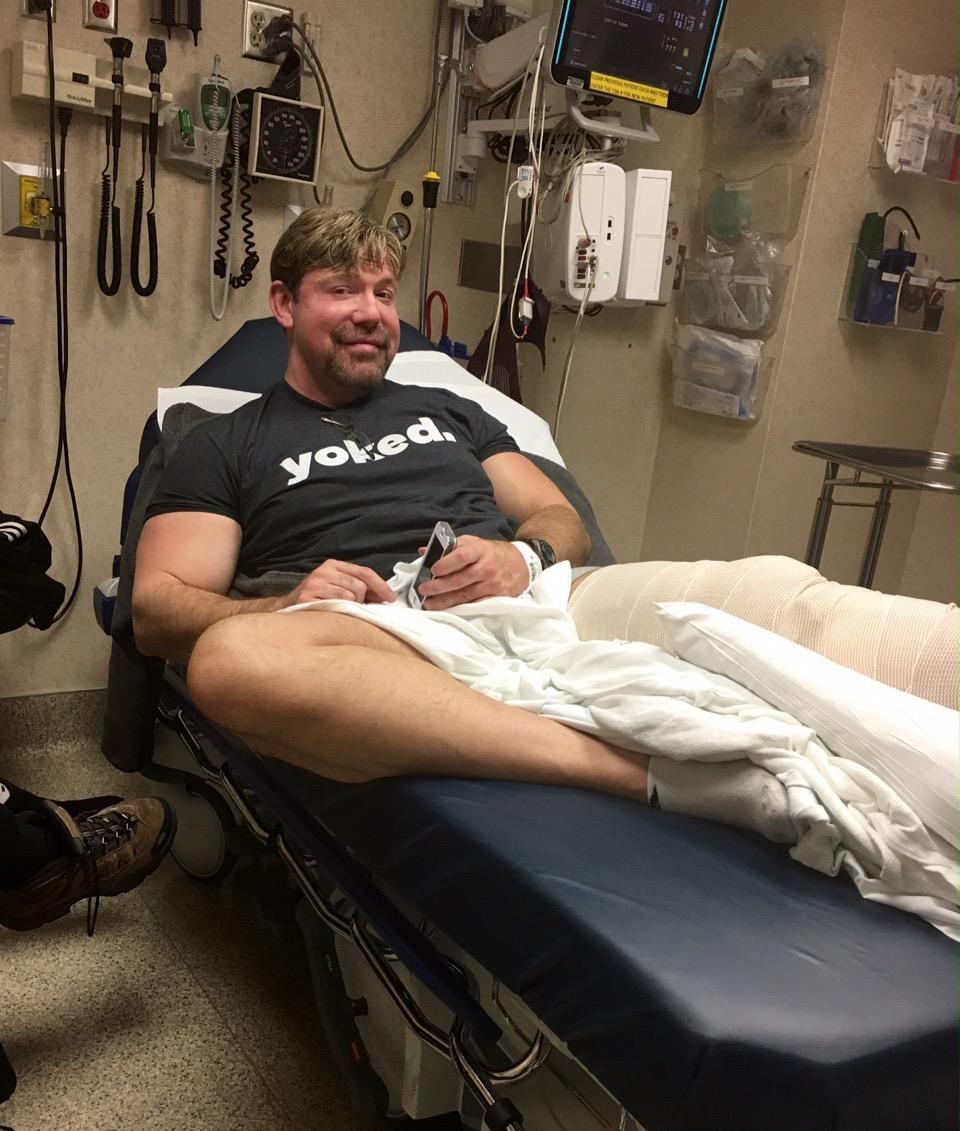Fractured Fibula And Complete Quadriceps Tendon Rupture
The good news: I got to spend Christmas Eve 2016 with my family while I was visiting Idaho. The less good news: We had to spend it in the emergency room.
The Accident
About 8:00 pm that night, I was in an accident that left me with a fractured fibula and a fully ruptured quad tendon in my left leg. If any of you were around during the winter of 2016, you’ll remember it was (not so affectionately) referred to as, “[Snow-mageddon]”. Credit that—and a little clumsiness on my part—for my adventurous holiday.
I haven’t lived in Idaho since undergrad, so not only was I facing an injury in a strange land, I had no idea what surgeon to consult to help me out. The ER doc told me he was setting me up with [Dr. Tadje]—whom I didn’t know at all—and my family all breathed a sigh of relief and enthusiasm.
All of us are athletic and we’ve all injured ourselves enough to know something about the medical pros in our areas. My sister’s comment to me after the ER doc left was:
“Wow, that’s terrific news. I wanted to see him for my shoulder—he’s one of the best in the valley.”
And indeed he was. I didn’t get to actually meet him until two days later right before my scheduled surgeries—one to pin the ankle, and the other to repair the badly damaged quad tendon.
Meeting the Surgeon
When Dr. Tadje entered the pre-op room, I liked him immediately. He greeted me with a confident smile. I could tell he was smart and knew his stuff by the way he talked to me about the procedures I was about to undergo. But he was also smart without making me feel dumb (I work in marketing—medicine is a bit of a mystery to me).
That made me feel a lot more comfortable since he left me with a good idea of what he was going to do, and what I’d be facing in terms of recovery and physical therapy (PT) over the next several months.
Surgery & Immediate Recovery
The surgery went well and was very successful. I went home that evening and all things considered, felt pretty good. But, I’m not gonna lie—once the anesthesia block wore off, the pain set in with a vengeance.
Dr. Tadje had been kind enough to give me his private line, and while I knew he was headed out for his own Christmas holiday with his family, I texted him anyway out of sheer desperation. He responded immediately and gave me a supplemental drug for the pain. I don’t think I’ve ever had a doc respond so quickly—certainly not over the Christmas holiday.
That first 48 hours was pretty rough—but I felt equipped to deal with it since Dr. Tadje had told what to expect, and he’d made himself available to help out. Facing those hours alone and without a doc who had not only informed me but made me feel like he was by my side, would have made it a pretty scary experience. But I never felt like I had to do this alone—Dr. Tadje was right there if I needed him.
Complications & The Road Ahead
As the weeks progressed, I returned to California and my ankle healed well. Mine was a super complicated situation given both injuries (in fact, in the literally hundreds of hours I’ve spent on the web researching them I’ve never encountered someone who experienced both on the same leg at the same time), so it would be misleading to say it was a cake walk.
And, it’s not exactly comforting to google your injury and have virtually every orthopedic website describe it with terms like “devastating” and “severely disabling,” so that—combined with Dr. Tadje being very honest with me about my recovery—helped me understand this would be a challenge.
Dr. Tadje stayed in touch even after I went back to California, and proactively reached out to me to see how things were progressing. While the news for the ankle was good—it was a bit less so for the quad repair. One of the things that’s required to heal the quad repair correctly is vigorous PT, and because of the ankle break I was unable to do much of what was required to work on the quad repair. As a result, my knee built up a lot of scar tissue and flexion became an issue—due only to the complex nature of trying to deal with both injuries.
In retrospect, I know we did the right thing by healing the ankle first so I could walk again and do the required PT for the knee. I was in a race against time, and given my body is one that builds scar tissue rapidly and in vast amounts, by the time the ankle was healed sufficiently my knee flexion was blocked by significant scar tissue build up. Despite my best efforts—and the best efforts of my awesome PT team in California, I became a candidate for a procedure known as “[manipulation under anesthesia]” or MUA.
Why Return to Boise?
Because I’d been working so closely with Dr. Tadje—and because I liked and trusted him—I made the decision to come back to Boise to do the procedure. I’m slated to do that procedure in a little over a week, so my adventures with Dr. Tadje and his staff (who also rock, more about them in the next installment) will continue. I’ve also made the decision to remove the ankle hardware this fall—and will once again be working with Dr. Tadje on that, so there will be a part three to all of this.
“Why don’t you just have those surgeries done in California?”
Yes, I get asked that all the time. And the truth is, I certainly could—there is no shortage of qualified surgeons in my area. But it’s important to me to know that the doc operating on me knows my case, is skilled, and is personally invested in my success. That made the decision to fly back to see Dr. Tadje pretty easy—he’s got all three qualities in spades.
The Results
I do have one complaint, though—it’s about the scar on my knee. All my female friends are envious because it’s healed so beautifully and is almost invisible. But hey, I’m a guy and after going through this adventure I wanted a gnarly war wound to show off as a badge of courage! But kidding aside, I think it’s a pretty cool testimony to his skill that I can emerge from a major surgery like this without looking like Dr. Frankenstein rebuilt my leg.
Oh, and maybe the best piece of news—Dr. Tadje told me to expect a full recovery. That means a lot to me as a weightlifter. In fact, a month prior to the accident I hit a personal best on my [Romanian Deadlifts (RDLs)], at 550 lbs. The gym and working out are really important to me, so hearing Dr. Tadje say the words, “You’re going to make a full recovery,” meant a lot.
And the best part: I believe him.
Sometimes it can be tough to find things to be grateful for when you’re facing an ortho injury—large or small. But I gotta admit, I’m sure grateful I drew Dr. Tadje’s card that night in the ER. He’s made my experience a lot less scary and painful—for me, at least, that’s a surgeon worth keeping.

